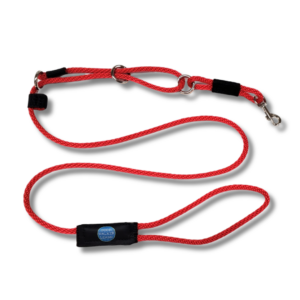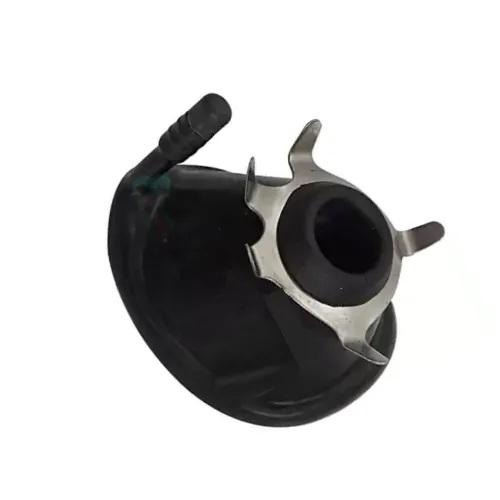Understanding Mechanical Ventilation: Lifesaving Technology
Mechanical-ventilation is a vital technology in healthcare designed to support patients who cannot breathe adequately. It provides artificial ventilation by delivering a controlled airflow into the lungs, ensuring sufficient oxygen intake and the removal of carbon dioxide. This method is particularly crucial in intensive care units, where patients often suffer from severe respiratory conditions. Mechanical ventilation can be finely tuned to match each patient's specific needs, offering a tailored approach that enhances the chances of recovery. By understanding the principles and applications of this technology, healthcare professionals can make informed decisions to optimize patient care and outcomes.
The Functionality of Mechanical-Ventilation
Mechanical ventilators work by pushing air into the lungs and allowing passive exhalation. They offer various modes, such as volume control, pressure control, and spontaneous breathing support. These modes can be adjusted to match the patient’s respiratory needs, enabling precise control over parameters like tidal volume and inspiratory pressure.
Advanced features include synchronization with the patient’s breathing efforts, enhancing comfort and effectiveness. Ventilators have alarms and safety mechanisms to ensure proper functioning and immediate response to irregularities.
Advantages of Mechanical-Ventilation
One key advantage of mechanical-ventilation is its ability to maintain optimal gas exchange, ensuring that the body’s organs receive adequate oxygen. Additionally, the technology’s adaptability allows healthcare professionals to customize settings to match each patient's needs, which is crucial for managing diverse medical conditions. The capability to adjust parameters such as respiratory rate and pressure levels can significantly improve patient outcomes.
Moreover, mechanical-ventilation can relieve the breathing work of patients in severe respiratory distress, thus conserving their energy and aiding in recovery. The precise control offered by modern ventilators helps maintain the delicate balance required for effective respiratory support, contributing to improved patient management and care in intensive settings.
Varieties of Mechanical Ventilators
Mechanical ventilators can be categorized into two primary types: invasive and non-invasive. Invasive ventilators necessitate the insertion of an endotracheal tube into the patient’s trachea, making them suitable for more critical conditions requiring precise control over ventilation. On the other hand, non-invasive ventilators utilize masks or nasal prongs to deliver air, which is beneficial for patients who need support but can still manage some level of independent breathing.
The choice between these types depends on the patient's medical condition and the level of respiratory assistance needed. Non-invasive options are often preferred for less severe cases to avoid the complications associated with intubation. Both types offer various modes and settings that can be adjusted to meet the specific respiratory requirements of patients.
Hazards and Complications
Mechanical-ventilation, despite its critical benefits, carries potential risks and complications. One notable risk is ventilator-associated pneumonia, which can develop due to prolonged intubation and mechanical assistance. Barotrauma, resulting from excessive air pressure, can lead to lung injury, further complicating the patient’s condition. There is also the concern of long-term dependency on the ventilator, which can hinder the weaning process.
Strategies to mitigate these risks include stringent infection control measures, careful monitoring of ventilator settings, and timely adjustments based on patient feedback. Awareness of these potential hazards enables healthcare professionals to adopt preventive measures, ensuring that mechanical-ventilation is as safe and effective as possible.
Components of a Mechanical Ventilator System
A mechanical ventilator is a crucial tool for patients unable to breathe independently, providing life-sustaining respiratory support.
Ventilator Circuit
The ventilator circuit connects the machine to the patient's airway, delivering oxygen and removing carbon dioxide. It includes tubes and filters that ensure the gas delivered is clean and safe.
Flow Control Mechanism
This component regulates the airflow, ensuring the correct volume and pressure of air or oxygen is delivered to the patient's lungs. It adjusts based on the patient's needs.
Pressure and Volume Sensors
These sensors monitor the pressure and volume of air inside the lungs, alerting healthcare providers to any potential issues such as over-ventilation or under-ventilation.
Oxygen Supply System
The oxygen supply system delivers a specific oxygen concentration to the patient, ensuring they receive the proper oxygen levels necessary for their condition.
Alarms and Monitoring System
This system alerts caregivers to changes in patient condition, such as inadequate ventilation or a disconnected circuit. It helps ensure patient safety by providing real-time monitoring of vital parameters.
Why Mechanical Ventilation Is a Vital Technology in Healthcare
Mechanical-ventilation is a cornerstone of modern medical care, particularly in critical settings such as intensive care units (ICUs). It is used to manage patients experiencing severe respiratory failure, giving them the necessary support when their lungs cannot function adequately. By regulating key parameters such as tidal volume, respiratory rate, and oxygen levels, mechanical-ventilation ensures that patients maintain proper gas exchange, helping to stabilize their condition during life-threatening events.
In addition to its critical role in ICU settings, mechanical-ventilation is vital in surgical environments, where it maintains the patient’s airway and ensures stable breathing throughout procedures. Surgeons and anesthesiologists rely on this technology to manage anesthesia and prevent respiratory complications, ensuring optimal conditions during surgery. Its ability to provide controlled, uninterrupted respiratory support is indispensable for patient safety in these high-risk situations.
The ongoing advancement of mechanical ventilation technology further enhances its effectiveness. Innovations in ventilator design and software enable more precise and personalized treatment, adapting to each patient's unique needs. As the technology continues to evolve, its role in patient recovery and stabilization remains crucial, offering life-saving support across various medical disciplines. With its broad applications, mechanical-ventilation is vital in acute care and routine medical interventions.
The Role of Healthcare Professionals
Healthcare professionals are essential in managing mechanical-ventilation, including setting and adjusting ventilator parameters based on the patient’s needs. They must continuously monitor the patient’s respiratory status, using data from various monitors to make informed decisions. Nurses and doctors collaborate closely to interpret clinical signs and laboratory results, ensuring that the ventilator settings provide optimal support.
They also perform regular assessments to detect potential complications early, adjusting treatment protocols as required. Effective training and experience are crucial for healthcare professionals to manage the complexities of mechanical-ventilation and respond promptly to any changes in the patient’s condition.
The Future of Mechanical-Ventilation
The future of mechanical-ventilation is poised to benefit significantly from advancements in technology and research. The integration of artificial intelligence promises to enhance ventilator management by providing real-time data analysis and predictive insights, potentially improving patient outcomes. Efforts are underway to develop more portable and user-friendly ventilators, increasing accessibility in diverse healthcare settings, including remote and resource-limited areas.
Innovations such as smart sensors and adaptive algorithms could offer more personalized respiratory support, optimizing treatment based on individual patient needs. Furthermore, ongoing research into non-invasive ventilation techniques aims to reduce the risks associated with invasive methods, improving overall patient safety and comfort. The continuous evolution of these technologies will likely play a crucial role in the future landscape of respiratory care.
Conclusion
Mechanical-ventilation is critical in supporting patients with respiratory failure or those unable to breathe independently. Using advanced technologies to manage airflow and oxygen delivery helps maintain vital functions until the underlying condition improves. Whether in intensive care units, emergency settings, or during surgeries, mechanical ventilation is a lifesaving tool that can make the difference between life and death. Continued research and innovation in ventilator technologies promise to improve patient outcomes and enhance the effectiveness of respiratory care in the medical field.
FAQ’s
What is mechanical ventilation?
Mechanical ventilation is a medical intervention that uses a machine known as a ventilator to assist or fully control breathing in patients who cannot breathe independently due to illness, injury, or anesthesia. The ventilator delivers air into the lungs, adjusting pressure, volume, and oxygen levels to meet the patient’s needs.
When is mechanical-ventilation needed?
Mechanical-ventilation is needed when a patient cannot breathe adequately on their own, such as in cases of respiratory failure, severe asthma, pneumonia, or during surgery. It is also used for patients with weakened lungs or those in critical care to maintain proper oxygenation and remove carbon dioxide from the blood.
How does mechanical-ventilation work?
Mechanical-ventilation uses a ventilator to deliver controlled breaths through a tube inserted into the airway (endotracheal tube or tracheostomy). The ventilator adjusts the rate, volume, and pressure of the breaths to ensure proper blood oxygen and carbon dioxide levels. It can be set to assist or fully control breathing, depending on the patient’s condition.
What are the risks of mechanical-ventilation?
While lifesaving, mechanical-ventilation carries risks, including infections (like ventilator-associated pneumonia), lung damage due to high pressure, and complications from prolonged use, such as muscle weakness. Close monitoring and care are required to minimize these risks and ensure the best patient outcomes.
How long can someone stay on a ventilator?
The length of time a person can remain on a ventilator varies depending on their condition and recovery. Short-term ventilation may last a few days, while long-term ventilation could extend to weeks or longer for patients with severe, chronic conditions. Healthcare providers aim to wean patients off the ventilator when they are stable enough to breathe independently.
|
Related Business Listings |






